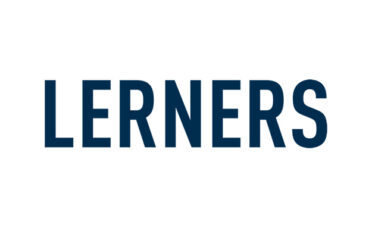What is Health Law in Canada?
Health law in Canada is a complex and evolving field that governs the legal rights and responsibilities of patients, healthcare providers, and institutions. It encompasses a wide range of issues, including patient rights, medical malpractice, public health regulations, and healthcare policy. Given Canada’s publicly funded healthcare system, health law plays a crucial role in ensuring access to care while balancing ethical, legal, and economic considerations.
This article explores the foundations of health law in Canada, key legal principles, major legislation, and current challenges in the field.
What Is Health Law?
Health law refers to the body of laws, regulations, and policies that govern healthcare delivery, patient rights, medical ethics, and public health in Canada. It intersects with constitutional law, administrative law, tort law (e.g., medical malpractice), and human rights law. Key areas of health law include:
-
Patient Rights and Consent
-
Medical Malpractice and Liability
-
Public Health Regulations
-
Healthcare Privacy and Confidentiality
-
End-of-Life Care and Medical Assistance in Dying (MAID)
-
Pharmaceutical and Drug Regulation
-
Health Insurance and Access to Care
1. Patient Rights and Consent
Informed Consent
A cornerstone of Canadian health law is the principle of informed consent, meaning that patients must be fully informed about their medical treatment options, risks, and alternatives before agreeing to care. This is rooted in common law and reinforced by provincial healthcare laws.
-
Key Case: Reibl v. Hughes (1980) – The Supreme Court of Canada ruled that doctors must disclose all material risks of a procedure, or they may be liable for negligence.
Capacity and Substitute Decision-Makers
If a patient lacks the mental capacity to consent (e.g., due to dementia or unconsciousness), healthcare providers must seek consent from a legally authorized substitute decision-maker (SDM). Each province has laws outlining who can act as an SDM, typically starting with a spouse, adult child, or parent.
-
Ontario’s Health Care Consent Act – Governs consent for treatment, admission to care facilities, and personal assistance services.
2. Medical Malpractice and Liability
Medical malpractice occurs when a healthcare professional’s negligence causes harm to a patient. To prove malpractice, a plaintiff must establish:
-
A duty of care (doctor-patient relationship existed).
-
Breach of standard of care (the provider failed to meet accepted medical practices).
-
Causation (the breach directly caused harm).
-
Damages (the patient suffered physical, emotional, or financial harm).
Common Types of Medical Malpractice
-
Surgical errors
-
Misdiagnosis or delayed diagnosis
-
Medication errors
-
Birth injuries
Limitation Periods
Each province sets time limits for filing malpractice lawsuits (e.g., two years from discovery of injury in Ontario under the Limitations Act).
3. Public Health Regulations
Public health laws aim to protect community health through disease prevention, vaccination mandates, and emergency measures.
Federal vs. Provincial Jurisdiction
-
Federal: The Public Health Agency of Canada (PHAC) manages national health emergencies (e.g., COVID-19).
-
Provincial: Each province has its own Public Health Act (e.g., Ontario’s Health Protection and Promotion Act).
Key Public Health Issues
-
Vaccination Policies – Courts have upheld mandatory vaccinations in certain settings (e.g., schools).
-
Quarantine Laws – The Quarantine Act allows the government to enforce isolation during outbreaks.
-
Pandemic Measures – Governments can impose lockdowns, mask mandates, and travel restrictions.
4. Healthcare Privacy and Confidentiality
Patient privacy is protected under:
-
Federal: Personal Information Protection and Electronic Documents Act (PIPEDA) – Applies to private-sector health data.
-
Provincial:
-
Ontario’s Personal Health Information Protection Act (PHIPA)
-
Alberta’s Health Information Act (HIA)
-
Exceptions to Confidentiality
Healthcare providers may disclose patient information in cases of:
-
Public health risks (e.g., reporting infectious diseases).
-
Court orders (e.g., in malpractice cases).
-
Duty to warn (e.g., if a patient threatens harm to others).
5. End-of-Life Care and Medical Assistance in Dying (MAID)
MAID became legal in Canada in 2016 under *Bill C-14* and was expanded in 2021 (*Bill C-7*). Key rules include:
-
Eligibility: Adults with a “grievous and irremediable” condition causing enduring suffering.
-
Safeguards: Two independent medical assessments are required.
-
Exclusions: Mature minors and those with mental illness as the sole condition are currently excluded (though debates continue).
Advance Care Planning
Patients can outline their end-of-life wishes in:
-
Living wills (instructions for future care).
-
Power of attorney for personal care (appointing a decision-maker).
6. Pharmaceutical and Drug Regulation
Canada regulates drugs through:
-
Health Canada – Approves medications under the Food and Drugs Act.
-
Patented Medicine Prices Review Board (PMPRB) – Controls drug pricing.
-
Cannabis Act (2018) – Legalized and regulated recreational cannabis.
Drug Liability Cases
Pharmaceutical companies can be sued for defective drugs (e.g., thalidomide lawsuits).
7. Health Insurance and Access to Care
Canada’s healthcare system is governed by the Canada Health Act (1984), which sets five principles:
-
Public administration (non-profit).
-
Comprehensiveness (covers necessary services).
-
Universality (all insured residents).
-
Portability (coverage across provinces).
-
Accessibility (reasonable access without financial barriers).
Private vs. Public Healthcare Debates
While most care is publicly funded, some services (e.g., dental, vision, private clinics) require out-of-pocket payment or private insurance. Legal challenges (e.g., Cambie Surgeries case in BC) debate whether banning private pay violates the Charter.
Current Challenges in Canadian Health Law
-
MAID Expansion – Debates over extending MAID to mental illness and mature minors.
-
Indigenous Healthcare Disparities – Legal battles over underfunding and systemic discrimination.
-
Digital Health & AI – Regulating telemedicine and AI diagnostics while protecting privacy.
-
Opioid Crisis – Legal actions against pharmaceutical companies and safe injection site laws.
Conclusion
Health law in Canada is a dynamic field that balances patient rights, medical ethics, and public health needs. From informed consent to MAID, healthcare privacy to malpractice liability, these laws shape how Canadians access and receive care. As medical technology and societal values evolve, so too will health law, requiring ongoing legal and policy adjustments.
For individuals navigating healthcare disputes or legal issues, consulting a health lawyer or patient advocacy group can provide essential guidance. Understanding these laws empowers patients and providers alike to uphold rights and responsibilities in Canada’s healthcare system.
Key Takeaways
-
Informed consent is mandatory for medical treatment.
-
Medical malpractice claims require proof of negligence and harm.
-
Public health laws allow government intervention in crises.
-
MAID is legal but subject to strict eligibility rules.
-
Healthcare privacy is protected under federal and provincial laws.
-
The Canada Health Act ensures universal access to essential care.
By staying informed, Canadians can better advocate for their health rights and contribute to ongoing legal and ethical discussions in healthcare.












